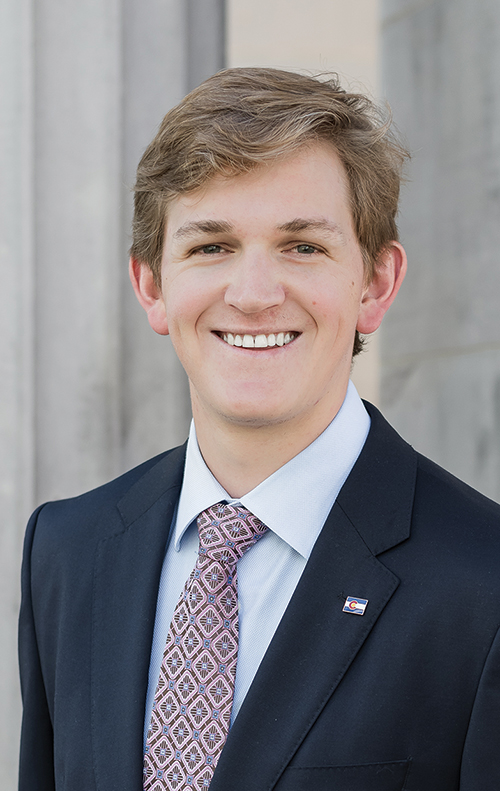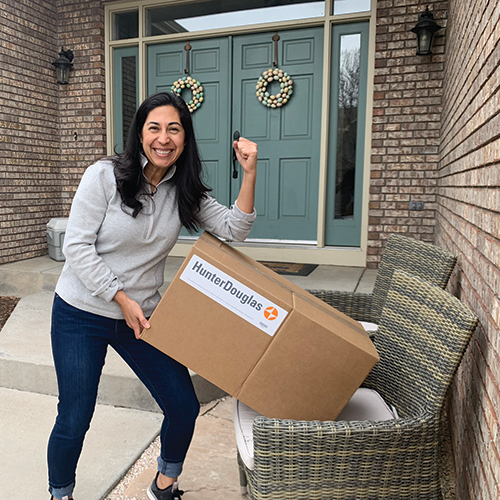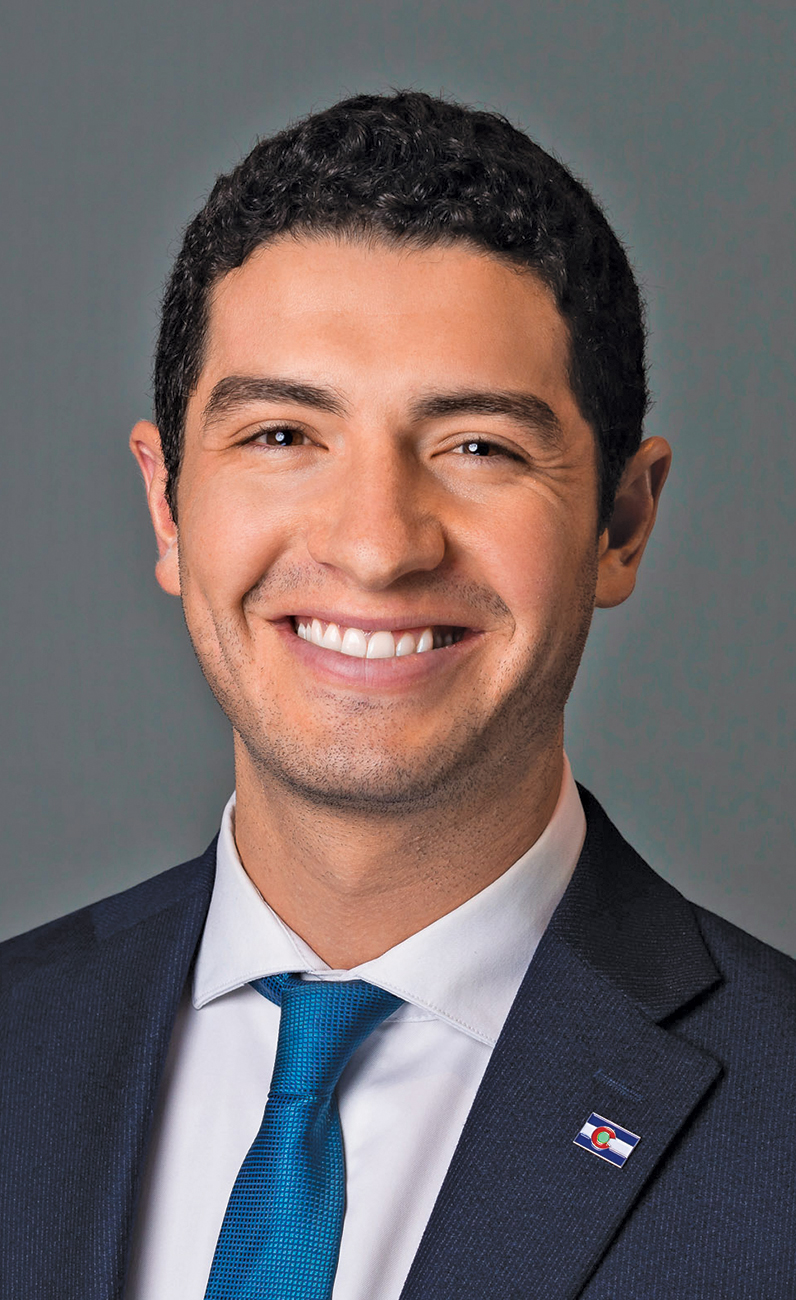Long before most leaders in the U.S. even knew exactly what hit them in March, Colorado Gov. Jared Polis was actively engaged in an effort to lead his state toward optimum outcomes in public health and economic recovery.
COVID-19 exacted an enormous toll on every state, and Colorado was no exception. On top of the devastating effects on human lives, the Colorado economy absorbed a broadside. By May, upwards of 370,000 state residents were collecting unemployment as mounting joblessness spread to every corner of the state. While the Front Range reached 11.5% unemployment, the rate ballooned to 21.6% in the Mountain region and 17.4% in Western Colorado.

Industries hit hardest included clothing and accessories, where sales were down 50.5% in March, and furniture and home stores, where sales declined 26.8%. Motor vehicle and parts dealers saw their sales drop 25.6%, while eating establishments and bars saw sales dip 26.5%.
Gov. Polis, however, wasted no time in responding to the catastrophe. His stay-at-home orders saved lives, and his relief efforts helped put people back to work. The Governor’s Council on Economic Stability and Growth issued more than 150 recommendations over two months of work to stabilize the Colorado economy and stimulate recovery.
The governor also mobilized New Normal working groups to help devise strategies for restarting the state’s economy. By June 3, the governor had issued four separate rounds of COVID-19 relief grants to aid in recovery. A total of 650 relief grants sent a combined $14 million to organizations serving all 64 counties in Colorado.
Through it all, Polis never cut corners on public safety. By early June, Colorado was conducting 8,000 coronavirus tests daily, enabling the state to capture half of all symptomatic cases. Polis also announced an alliance with the Corporation for National and Community Service. The partnership mobilized more than 800 AmeriCorps and Senior Corps members to assist the state’s COVID-19 response through contact tracing and related work.
By June 3, the governor had issued four separate rounds of COVID-19 relief grants to aid in recovery. A total of 650 relief grants sent a combined $14 million to organizations serving all 64 counties in Colorado.
One measure of Colorado’s success was the fact that more than 80% of those who applied for unemployment benefits in the state received them. That is one of the highest assistance rates of any state in the nation, according to the Colorado Department of Labor and Employment.
Survey Showed State How to Respond
Reid Aronstein, global business development manager for the Colorado Office of Economic Development and International Trade, says that a statewide business survey conducted in April helped reveal the scope of the challenges faced by Colorado businesses. In the survey which had 2,400 respondents, about 40% of the businesses said it would take more than 6 months to return to pre-COVID-19-level revenues and profit margins. Also, about 40% of the businesses that remained open reported that they suffered declines in sales of 50% or more.
“Most businesses said that their 2020 revenues would be at least 25% below what they had originally projected at the start of the year,” says Aronstein. “And about half of the businesses said they would have to lay off employees either now or sometime over the next 6 months.”

“We were on the earlier side of reopening but also on the low side of cases. That has allowed us to get back to a place where businesses are reopening.”
Controlling the outbreak and staging a phased, early reopening of the economy were crucial to helping businesses recover, he adds. “We were on the earlier side of reopening but also on the low side of cases. That has allowed us to get back to a place where businesses are reopening,” Aronstein notes. “The Payroll Protection Program was crucial to keeping employees on board at small businesses. Businesses need short-term capital to keep up with payroll, rent, overhead and other expenses. They also need tax relief and low- or no-interest loans.”
More than 80% of those who applied for unemployment benefits in the state received them—one of the highest rates of any state in the nation.
Despite the unprecedented setback to a state economy that had been ranked No. 1 in the nation by U.S. News prior to the pandemic, corporate facility expansion activity began bouncing back quickly in late May and early June.
“On June 1, AGC Biologics announced they were acquiring a 300,000-square-foot AstraZeneca facility in Boulder, making a $100 million investment and hiring up to 280 new jobs in the state,” Aronstein says. “Emerson Electronics announced a $100 million investment in Boulder to expand its manufacturing capacity and establish an innovation center to test new technology.”



Getting Back to Business

Max Nathanson, another global business development manager at OEDIT, says that after experiencing a lull in March and April, “there has been a fairly sharp uptick again, with three new competitive incentive projects going forward in June.”
Nathanson says he’s “hearing from site selectors and locals on the ground that there are rumblings about shifting international supply chains away from Asia, and they’re saying that Colorado is well positioned to capitalize in the fields of aerospace, energy and bioscience.”
He adds that Colorado is seeing “an increase in activity of companies looking to diversify away from California and New York. Those locations are being viewed as onerous in their regulatory and policy environments. In contrast, Colorado provides a common-sense, collaborative environment. We’ve seen those trends accelerate even more in recent weeks.”
By early June, Colorado was conducting 8,000 coronavirus tests daily, enabling the state to capture half of all symptomatic cases.
Nathanson says OEDIT is encouraged by the fact that Colorado was the first state to officially clear the threshold of recovery from the Great Recession of 2008-2009. “We have a very resilient economy that is positioned to weather this storm better than most,” he notes. “This is a very different challenge now than what we faced in 2009 and 2010, but we’re reopening in a way that’s as business-friendly as possible. We’re one of the leading state economies in the country, and we’re committed to helping everyone recover, including small businesses, minority-owned businesses and others who have absorbed the brunt of the blow.”
He adds that “we need to make investing in our small businesses the top priority of the economic recovery at the federal level.”

